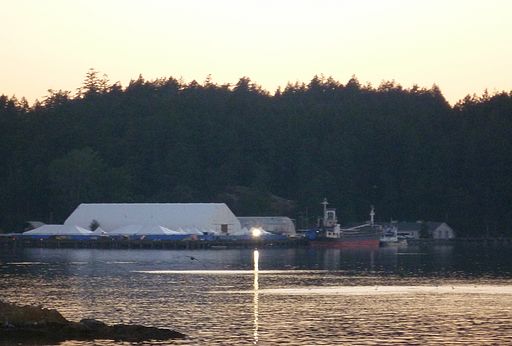Canada sometimes detains people from other countries who are not Canadian citizens. The government does this while it decides if the migrant can stay in Canada or if they must go back to their own country. Canada does this even though detained migrants are not criminals.
(This article is a plain-language summary on immigration detention in Canada. If you are interested in reading about this topic in more depth, please see our full-length entry, Immigration Detention in Canada.)
How Immigration Detention Works
The Canada Border Services Agency (CBSA) helps Canada control its borders. CBSA can detain non-citizens as outlined under the Immigration and Refugee Protection Act. It does so if it cannot verify their identity. It can also do so if the person might try to avoid authorities or be a danger to the public.
CBSA keeps immigration detainees at one of three Immigration Holding Centres (IHCs). They are in Laval, Quebec; Surrey, British Columbia; and Toronto, Ontario. IHCs often resemble prisons. When someone is detained, the law says their case must be checked by a judge within 48 hours. Then, they have another check after seven days, and once a month after that. This can mean that detainees do not know when they can leave.
As of 2018, Canada started using Alternatives to Detention (ATD). It’s a way to handle immigrant cases without putting people in detention. For example, the government might make former detainees pay a cash bond. This is to make sure they come back for their check-in appointments with immigration officials. It might also monitor them electronically or while they are living in the community.
Issues with Immigration Detention
Indefinite Detention
Canada has no limit on how long it can detain someone for immigration reasons. This means that people can be in detention for a long time. Some don’t know when they will be released. The law allows this as long as there is an immigration-related reason. For example, if the government thinks the migrant will hide from authorities. Detainees do not have a legal right to a state-funded lawyer. The detainee must prove that they should be released.
Detention of Children
Children are supposed to only be detained as a last resort. This can happen when a migrant parent is detained. If the parent does not want their child in detention, they can have their child stay with a relative or guardian. CBSA can also place the child in foster care. Detaining children can lead to serious mental and emotional issues for the child and family. The detention of a parent can also lead to family separation. The detention of children and the issue of family separation has been a long-standing issue in Canada. (See Child Migration to Canada.)
Long-Term Impacts
Detention seriously affects the psychological well-being of detainees. Many experience long-lasting trauma, anxiety and depression. These often come about because of their time in detention facilities. Detainees suffer from the isolation, uncertainty and harsh conditions.
Deaths in Immigration Detention
There have been many deaths of detainees while in custody. The causes of these deaths vary, but they often involve inadequate medical care, poor living conditions, and the emotional and physical toll of detention. These cases are not highly publicized. Government officials have yet to be held accountable for these deaths.
Are Human Rights at Stake?
People have criticized Canada over its immigration detention practices and policies. (See Immigration Policy in Canada.) They say that Canada’s detention practices violate international norms and human rights obligations.
The government has worked to put in community-based alternatives. This is to better respect migrant rights. Ultimately, the goal is to ensure the safety, protection and rights of migrants in Canada's immigration system. (See also Immigration to Canada.)

 Share on Facebook
Share on Facebook Share on X
Share on X Share by Email
Share by Email Share on Google Classroom
Share on Google Classroom


